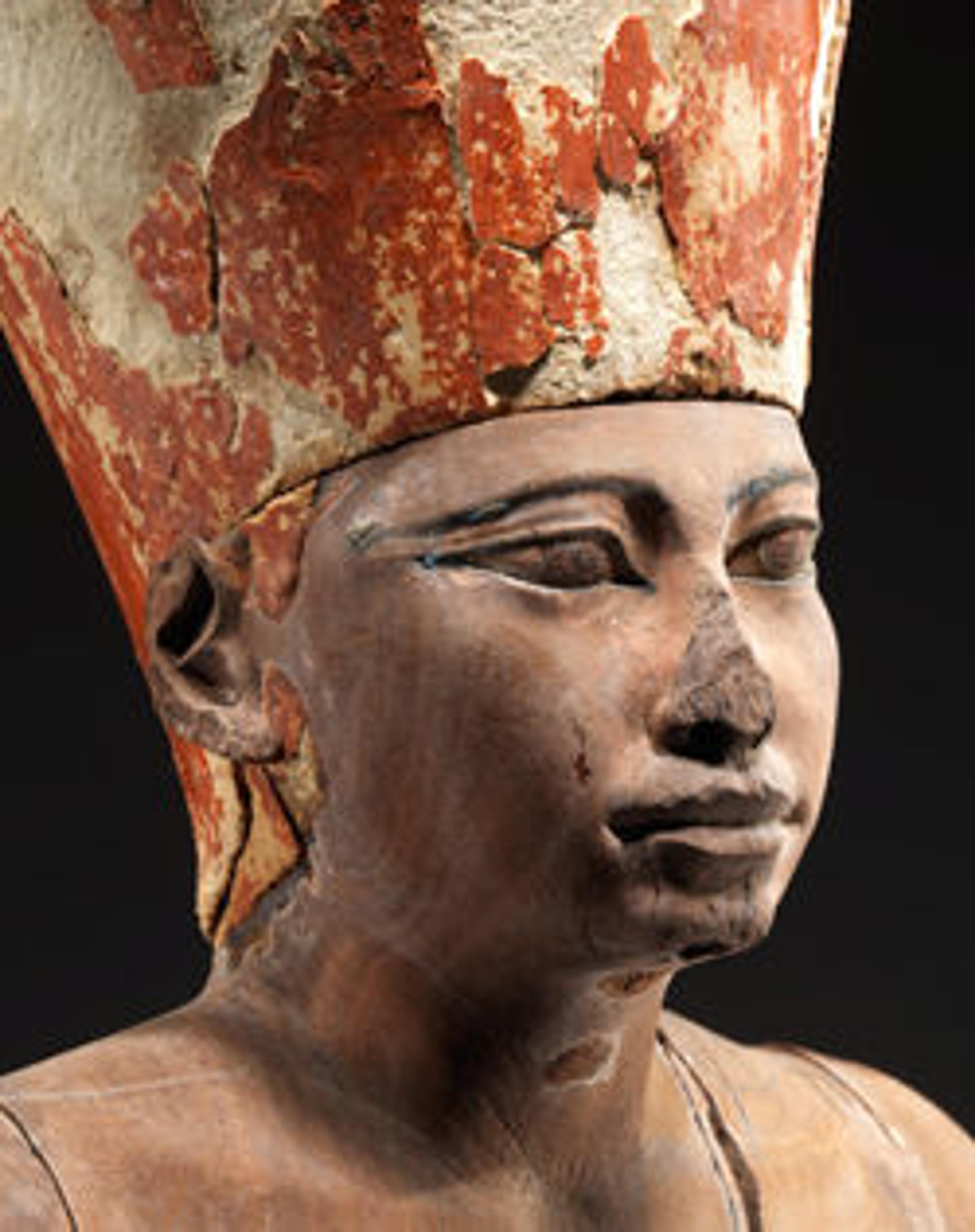Apotropaic rod
Composed of four joining segments, this so-called magic rod is the only completely preserved example of its type. Perhaps related to the four "birthing bricks" arranged for the protection of mother and child during delivery, the rod was used to ward off harmful spirits. Some of the protective motifs—feline predators, crocodiles, toads, a turtle, wedjat eyes, and baboons with flaming torches—were also depicted on apotropaic wands and feeding cups, objects with the same defensive function.
Artwork Details
- Title: Apotropaic rod
- Period: Middle Kingdom
- Dynasty: Dynasty 12
- Reign: reign of Senwosret III
- Date: ca. 1878–1640 B.C.
- Geography: From Egypt
- Medium: Glazed steatite
- Dimensions: L. 27.5 cm (10 7/8 in.); W. 2.3 cm (7/8 in.); d-e) crocodiles: L. 3.5 cm (1 3/8 in.); f-g) lions: L. 3 cm (1 3/16 in.); h) turtle: L. 2.6 cm (1 in.); i-j) frogs: L. 2 cm (13/16 in.)
- Credit Line: Purchase, Edward S. Harkness Gift, 1926
- Object Number: 26.7.1275a–j
- Curatorial Department: Egyptian Art
Audio
1119. Magic rod with animals on top
0:00
0:00
We're sorry, the transcript for this audio track is not available at this time. Please email info@metmuseum.org to request a transcript for this track.
More Artwork
Research Resources
The Met provides unparalleled resources for research and welcomes an international community of students and scholars. The Met's Open Access API is where creators and researchers can connect to the The Met collection. Open Access data and public domain images are available for unrestricted commercial and noncommercial use without permission or fee.
To request images under copyright and other restrictions, please use this Image Request form.
Feedback
We continue to research and examine historical and cultural context for objects in The Met collection. If you have comments or questions about this object record, please contact us using the form below. The Museum looks forward to receiving your comments.
